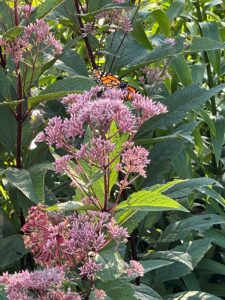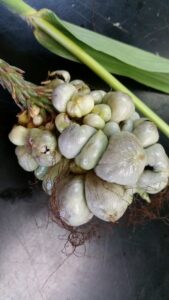Sweet Corn
Fall armyworm (FAW) infestations continue in most scouted locations in central and northern NJ counties, although numbers are down. Pockets of heavier pressure remain. Re-infestations following treatment can and have occurred. Because FAW moths are highly mobile, it is important to monitor fields at least weekly for signs of infestation. Whorl, and even seedling stage plants are prime targets for egg laying. Delays in treating whorl stage infestations can lead to stunted plants and poor ear size.
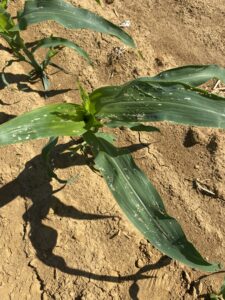 Newly hatched FAW larvae cause holes and scratches on leaves that are similar to ECB feeding, except that they tend to be more concentrated and always lead down into the whorl (see photo at upper left). As the larvae grow, the feeding becomes more destructive, with large ragged holes and obvious droppings deposited in the whorl (see photo at right).
Newly hatched FAW larvae cause holes and scratches on leaves that are similar to ECB feeding, except that they tend to be more concentrated and always lead down into the whorl (see photo at upper left). As the larvae grow, the feeding becomes more destructive, with large ragged holes and obvious droppings deposited in the whorl (see photo at right). 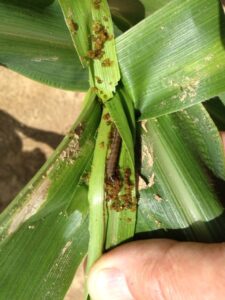
We will provide updates on new FAW appearances and severity as reports come in. FAW are resistant to synthetic pyrethroids. Effective sprays should include IRAC grp. 5 (spinosyns) or IRAC grp. 28 (diamides). The carbamate (IRAC grp. 1A) Lannate is also still effective. Sufficient water should be used 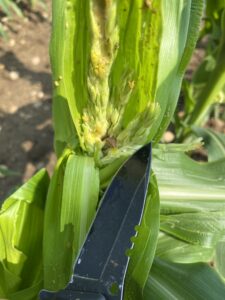 in the applications to allow the solution to reach larvae that are partially protected while feeding on the immature tassel (photo at lower left), and to penetrate the layer of droppings that may have formed above the caterpillars.
in the applications to allow the solution to reach larvae that are partially protected while feeding on the immature tassel (photo at lower left), and to penetrate the layer of droppings that may have formed above the caterpillars.
